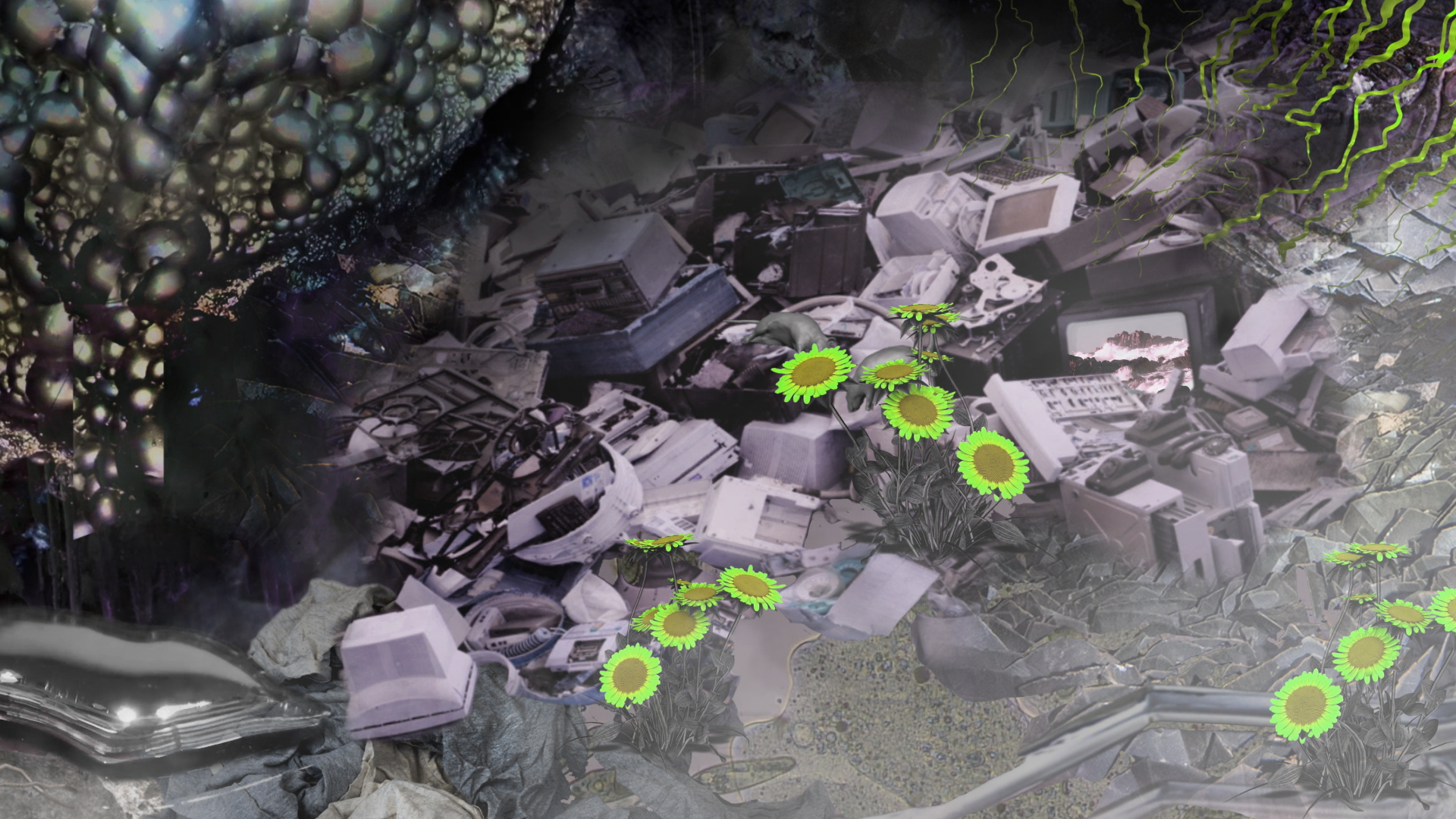THAT THE EARTH IS THE MIDDLE OF THE WORLD...
That the Earth is the Middle of the World (2020) is a two-channel video that incorporates excerpts from Pliny’s Naturalis Historia (79 CE), a scientific encyclopedia cataloging all the earth’s elements, systems and creatures known at the time in the early Roman Empire. This text is one of the first of its kind in its formulation of an encyclopedic approach towards natural phenomena, and has since become fundamental to the study, documentation and knowledge of nature in the West.
Each channel of the video is projected onto free-standing, billboard-like structures. On the left, a submerged humanoid narrator recites chapter headings from the table of contents of Naturalis Historia, while on the right we bear witness to a baroque and hallucinatory ecosystem seething with natural and synthetic life forms. The video is a collage of over 500 elements, and imagines “nature” as a product of conceptual bricolage informed by the arts, sciences, technology industries and pop culture.
The endless list of natural phenomena recited by the narrator conjures both creation à la Noah’s arc and extinction— an endless womb-grave in which the human is imagined as a residual or vestigial structure of the landscape. A self-conscious investigation of apocalyptic aesthetics, the work both indulges in and grapples with the cinematic languages of spectacle and destruction. As the two scenes are intermittently drenched by rainfall and fogged by morning mist, foley tropes borrowed from horror and sci-fi cinema create a narrative that vacillates between earnestness and irony, between the Romantic, the tragic and the absurd.
 Still image from That the Earth is the Middle of the World, 2-channel HD video & sound, 11-minute seamless loop, 2020.
Still image from That the Earth is the Middle of the World, 2-channel HD video & sound, 11-minute seamless loop, 2020.
 Still image from That the Earth is the Middle of the World, 2-channel HD video & sound, 11-minute seamless loop, 2020.
Still image from That the Earth is the Middle of the World, 2-channel HD video & sound, 11-minute seamless loop, 2020. Still image from That the Earth is the Middle of the World, 2-channel HD video & sound, 11-minute seamless loop, 2020.
Still image from That the Earth is the Middle of the World, 2-channel HD video & sound, 11-minute seamless loop, 2020. Still image from That the Earth is the Middle of the World, 2-channel HD video & sound, 11-minute seamless loop, 2020.
Still image from That the Earth is the Middle of the World, 2-channel HD video & sound, 11-minute seamless loop, 2020. Still image from That the Earth is the Middle of the World, 2-channel HD video & sound, 11-minute seamless loop, 2020.
Still image from That the Earth is the Middle of the World, 2-channel HD video & sound, 11-minute seamless loop, 2020. Still image from That the Earth is the Middle of the World, 2-channel HD video & sound, 11-minute seamless loop, 2020.
Still image from That the Earth is the Middle of the World, 2-channel HD video & sound, 11-minute seamless loop, 2020. Still image from That the Earth is the Middle of the World, 2-channel HD video & sound, 11-minute seamless loop, 2020.
Still image from That the Earth is the Middle of the World, 2-channel HD video & sound, 11-minute seamless loop, 2020.
Simulated installation, excerpt of That the Earth is the Middle of the World, 2-channel HD video & sound, 11-minute seamless loop, 2020.